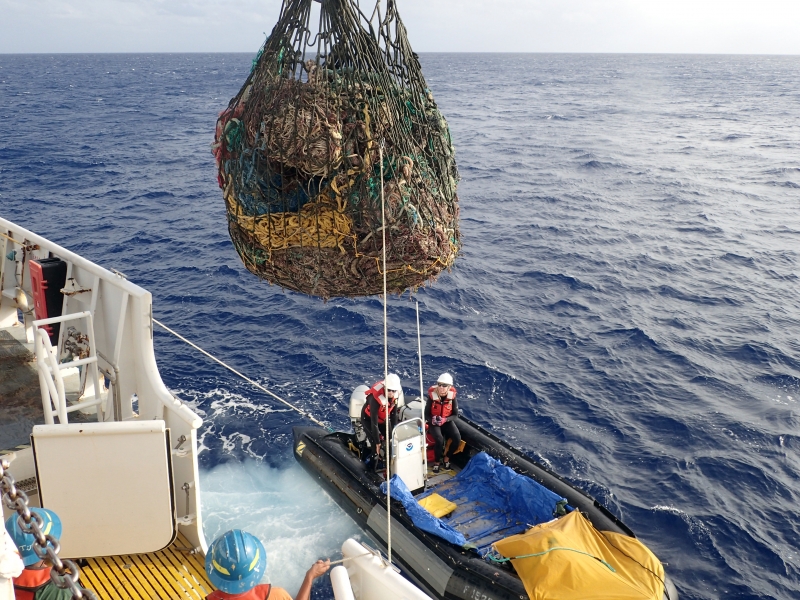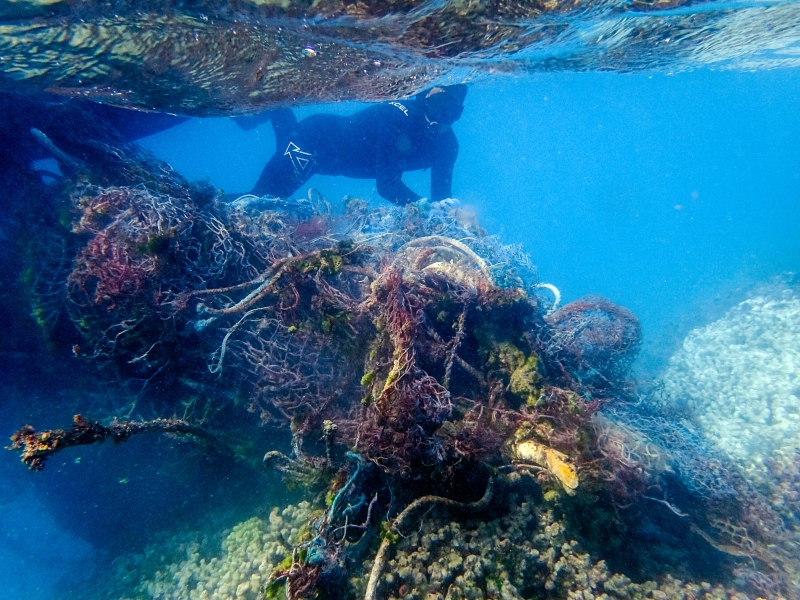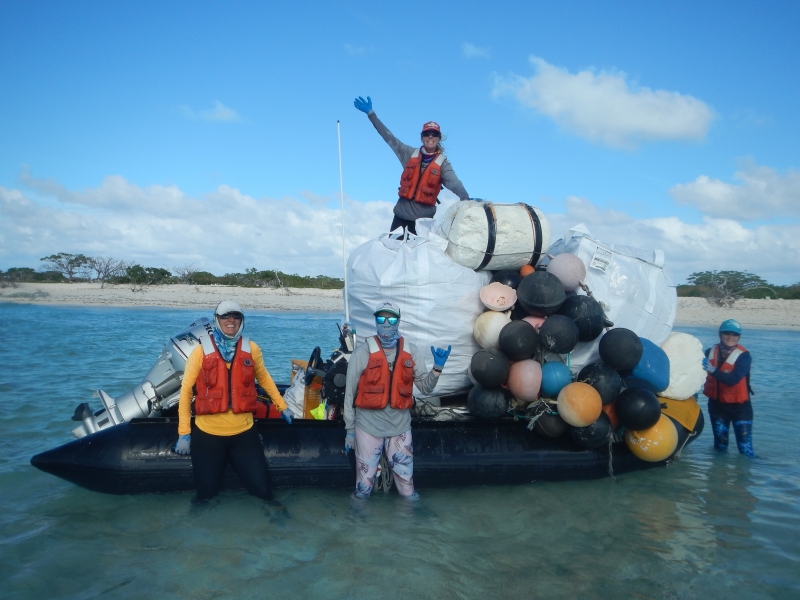How do you pull an entire space shuttle’s weight in marine debris out of one of the most remote parts of the ocean? The answer is teamwork. Last week, on October 29th, a mission ended to remove debris, mostly lost fishing nets, from the uninhabited Northwestern Hawaiian Islands. These lost nets are a huge entanglement risk to marine life and damage critical habitat. The three part mission involved two ships, five NOAA offices (Pacific Islands Fisheries Science Center, Pacific Islands Regional Office, Marine Debris Program, National Marine Sanctuaries, and the Damage Assessment Remediation and Restoration Program), the University of Hawaii's Joint Institute for Marine and Atmospheric Research, National Fish and Wildlife Foundation, U.S. Fish and Wildlife Service, Midway Atoll National Wildlife Refuge, the State of Hawaii’s Department of Land and Natural Resources, and the Papahānaumokuākea Marine National Monument. By working together, these organizations were able to remove over 82 tons of debris (which is the approximate weight of the Space Shuttle Endeavor or 12 T. rexes).

The first vessel, NOAA Ship Oscar Elton Sette, set out on September 18th and headed for the Pearl and Hermes Atoll. This atoll is almost 1,300 miles from Honolulu and is full of important coral reef and seabird habitat. After 10 days of surveys and removal operations, the NOAA crew was able to come away with over 52,000 lbs of derelict fishing nets, approximately 4 elephants worth. And that was only the beginning.

On part two of the mission, the team set out to Midway Atoll, so named because it is approximately midway between North America and Asia. At Midway, the team collected enough nets and plastic from the shallow reefs and shorelines to weigh as much as 55 grizzly bears (62,000 lbs). The final leg of the mission visited Kure Atoll, Pearl and Hermes Atoll, Lisianski Island, Laysan Island, and French Frigate Shoals, adding 48,000 lbs more to the total.

After returning to homeport in Honolulu, the process begins of sorting and disposing of the tons upon tons of nets and plastics. How do you dispose of 80 tons of plastic and nets? This debris isn’t going to a landfill,instead it will be reused and repurposed. Some will go to H-Power’s “Nets to Energy Program” to create electricity for homes across the island of O‘ahu. Some will go to artists to become beautiful works of art. Some will stay as they are, in their current form, and be used to educate people about the impacts abandoned nets have on our marine ecosystems.

This is not the first year this mission has set out. The NOAA PIFSC’s Marine Debris Removal Project started in 1996 and now takes place every few years. Since then over 1017 tons of debris has been removed from the remote expanses of the Northwestern Hawaiian Islands, which is about the same weight as nine blue whales, the largest animals to have ever existed on earth. While this is certainly impressive, we look forward to the time when the mission isn’t necessary, when nets and marine debris no longer accumulate on these culturally and ecologically significant islands.
To learn more about the team’s journey, you can check out their story map.
